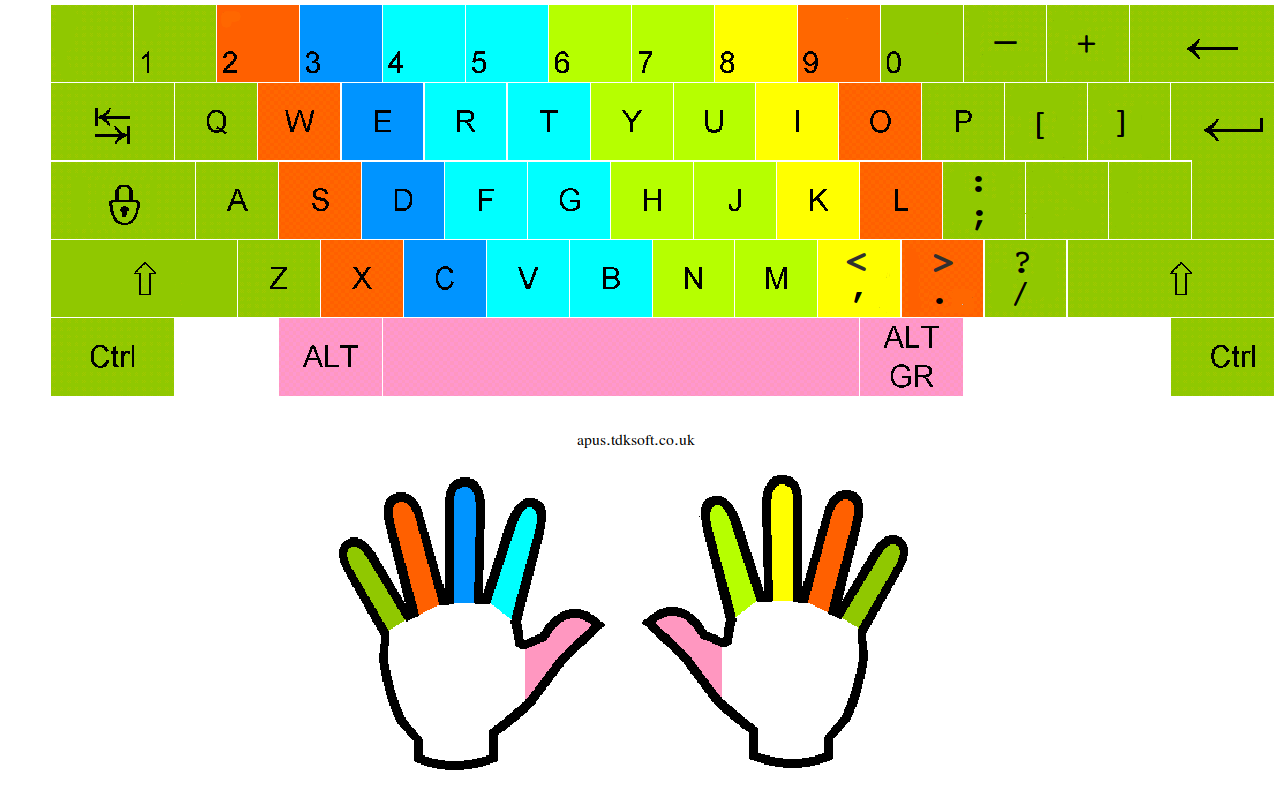

TYPING FINGERS KEYBOARD HOW TO
“It appears that not only don’t we know much about what we are doing, but we can’t know it because we don’t consciously learn how to do it in the first place,” says Logan. Given the prevalence of this “use it or lose it” explanation, the researchers were surprised when they found evidence that the typists never appear to memorize the key positions, not even when they are first learning to type. This allows you to think about other things while you are performing the task. Then, as you repeat the task, it becomes increasingly automatic and your awareness of the details gradually fades away. What did come as a surprise, however, was a finding that conflicts with the basic theory of automatic learning, which suggests that it starts out as a conscious process and gradually becomes unconscious with repetition.Īccording to the widely held theory-primarily developed by studying how people learn to play chess-when you perform a new task for the first time, you are conscious of each action and store the details in working memory.

So scientists had assumed that typing also fell into this category, but had not tested it. Automatic behaviors of this type are surprisingly common, ranging from tying shoelaces to making coffee to factory assembly-line work to riding a bicycle and driving a car. For more than a century, scientists have recognized the existence of automatism: the ability to perform actions without conscious thought or intention. The fact that the typists did so poorly at identifying the position of specific keys didn’t come as a surprise. By contrast, they could accurately place an average of only 15 letters on a blank keyboard. On average, they typed 72 words per minute, moving their fingers to the correct keys six times per second with 94 percent accuracy. Then, they were shown a blank QWERTY keyboard and given 80 seconds to write the letters in the correct location. The participants completed a short typing test. Researchers recruited 100 university students and members from the surrounding community to participate in an experiment. “This demonstrates that we’re capable of doing extremely complicated things without knowing explicitly what we are doing,” says Vanderbilt University graduate student Kristy Snyder, the first author of the study, which was conducted under the supervision of Centennial Professor of Psychology Gordon Logan.

Skilled typists can’t identify the positions of most keys on the keyboard, and novices don’t appear to learn key locations in the first place, a new study shows. You don’t really know what your fingers are typing.


 0 kommentar(er)
0 kommentar(er)
